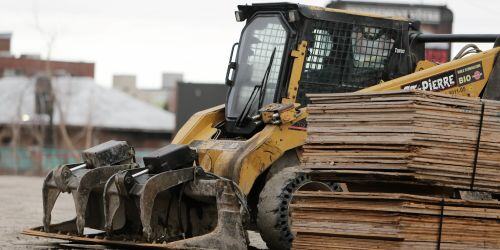What Construction Companies are Doing to Manage the Environmental Impacts
Since millennials became a driving force in the marketplace, they’re impacting the drive for environmentally friendly construction. The United States Green Building Council (USGBC) noted a five percent increase of LEED or Energy Star certified building. 72% of surveyed construction firms are expanding efforts to build low-cost sustainable buildings, this is backed up by the high employability of green certified architects, construction workers, and specialty trade workers. Research is showing the true impact of construction on the environment, and what construction companies are doing to manage the environmental impacts.

Table of Contents
The Impact of Construction on the Environment
Construction can impact the environment in a variety of ways, from air and water quality to the soil stabilization. Since construction uses roughly 400 million tons of materials every year and doesn’t just impact the environment surrounding the project. The extraction of raw materials can be damaging to the surrounding sites due to the fumes and chemicals from the extraction process. The U.S. construction industry accounts for 25% of non-industrial waste created in a year. A USGBC study showed that construction also accounted for roughly 40% of energy use in a year. Plus, construction accounts for 23% of air pollution, 40% of drinking water pollution, and 50% of landfill waste in the world. With this in mind, construction companies are finding new and innovative ways to reduce the impact of construction on the environment.
Ways to Manage Environmental Implications
Many agencies, universities, and organizations are working towards ways to reduce the impact of construction on the environment. Universities and researchers are working on green construction materials to help scrub pollution, ease repairs, and reduce energy needs. While environmental agencies are working towards creating standards and documentation to improve buildings in the future. People are paying attention to the impact the building will have the neighboring buildings and environment, caring less about cost and more about sustainability. These are three methods used to increase environmental friendliness of buildings and reduce the impact of construction on the environment.

EPA and LEED Standards and Training
The EPA set forth standards that buildings and construction must meet, but there are the voluntary green standards. Not only do these increase the value of a building, they also help the environment. By educating your employees on the mandatory EPA standards and voluntary standards you want to meet, you can smooth the transition into green construction. LEED is Leadership in Energy and Environmental Design and is the most common green building rating system internationally. It also has standards and aids for retrofitting and new construction and is helping to provide cost-efficient and healthy buildings across the globe. Incorporating both into your design and training will reduce the impact of construction on the environment.
Environmentally Friendly Materials
Many construction companies are trying to manage the environmental impact through environmentally friendly materials. Environmentally friendly building materials reduce the amount of material thrown into landfills, or amount of raw material harvested each year. Some products are recycled like recycled steel or glass tiles or even ashcrete. While many products pertain more to the finished look like recycled newspaper wood flooring, others can be used foundationally. Many of these recycled or upcycled products can help buildings earn LEED certification points, and reduce the negative impact of construction on the environment.
Energy and Fuel Efficient Tools
With the rising price of fuel, it can be a large portion of a business’s operating budget. Vehicles, especially idling vehicles, put many harmful chemicals into the surrounding air and cause pollution. Currently the amount of air pollution and the amount of energy needed to build a building is incredibly high. Efficiency can not only reduce costs, but helps the environment. Brands like Caterpillar and Dewalt are dedicating resources to developing better and more efficient equipment. They’re doing their part to reduce the impact of construction on the environment.
Green Construction Practices
The market is responding positively to green construction and its practices and people are paying attention more to the buildings they work and live in. They are pushing for environmentally friendly buildings construction, companies with these practices already in place will benefit. Mounting public interest in environmentally friendly construction companies makes these practices a benefit to your bottom line.


